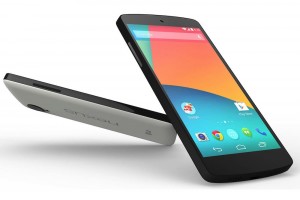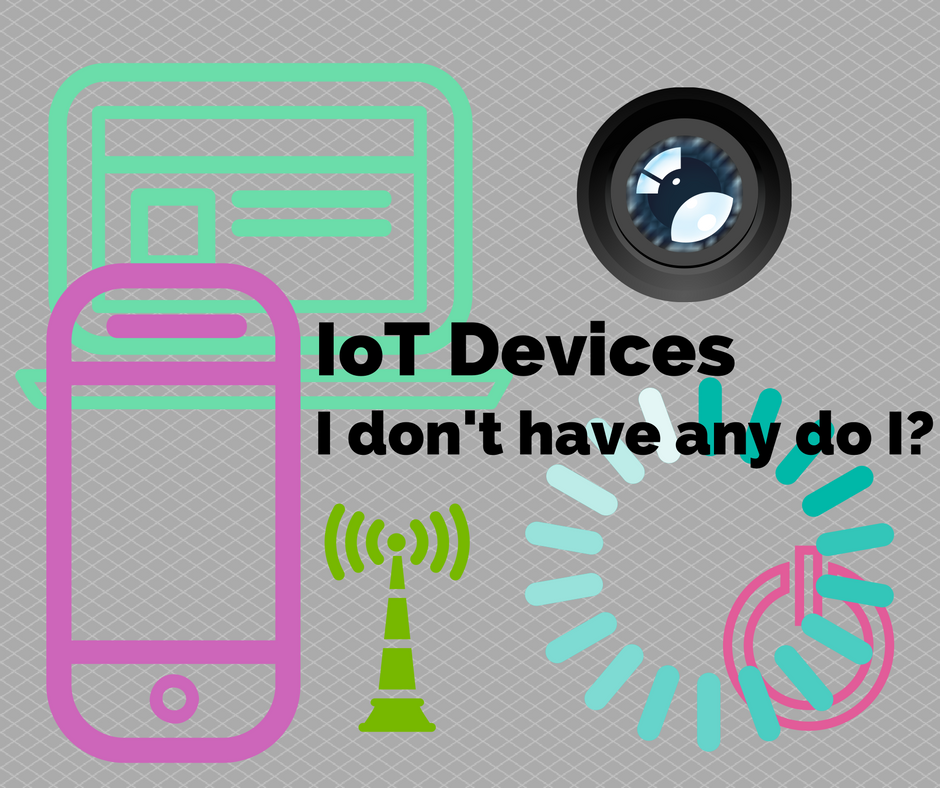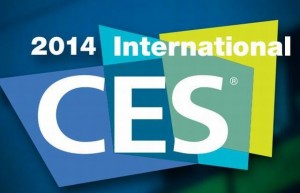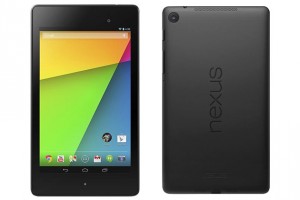Check out the new video from our parent organisation. (Sorry for the bitable banners)
Tag Archives: brand
IoT’s, I don’t have any IoT’s do I?
Here is a newish term that has been getting brandished around the Internet for some time now. At first as a techie I may think, Institute of Technology devices, Oh, I don’t have any of these. However, I would be so wrong. So what are they and what does it stand for?
IoT’s or Internet of things devices are now all around us whether we like it or not. They are devices that require an IP address to access the network or Internet. I like to think of them as Internet on Technology.
Your mobiles and any tech wear that you have, card reader machines, cash points, smart TV’s Tablet computers and any smart home devices that you may own. Your car, security cameras, home thermostats, amoung other things, even ticket machines and some vending machines.
What does it mean?
It means that things have progressed along a road that had been predicted, but the faster broadband speeds and methods of connectivity have meant it is now a reality.
Let’s rewind a little, A few years ago we have a desktop PC and then maybe a laptop and at first they did not connect to the Internet at all. We then got dial up Internet and we all tentatively put our toes in the water that was the Internet. Well, from there speeds just got faster and faster and Mobile phones came along, then they became smart. This meant connecting to the Internet and using it as a resource to feed you constant information. This meant improving phone signal strength and so we got up to 4G with 5G on its way.
Other devices then came along and allowed us to stream content around our houses and cars, how great was all this connectivity. Well, it is amazing how far we have come in such a short time.
So what’s all the fuss about, surely this is great news?
The reason that these devices are in the news a lot today is that there are now hundreds of thousands of them, being made by well-known companies and also so not so well known but less expensive alternatives and they all connect to the Internet. Now, securing our stand alone network that had no Internet connection was easy, what you put into it was the only danger. Now that these devices are on the Internet all the time they are able to pull all sorts of data into your device and if it is connected to your network, then onto your network as well.
You would think that this was matter of the device being smart and you being able to configure all the settings and hence protecting all that is does. However, loopholes in the software on these devices, not them all, but some are causing the security world a massive headache and some of the attacks to systems that you have read about recently have been because the software on these devices is not well written and is very insecure. Hackers are catching onto the fact that the world has a massive amount of these types of devices and there are more switched on each day and they are targeting their weaknesses.
So really the question is, “When is a smart device not so smart?” when it runs badly written software that has security holes that you can drive a programming bus through.
Here are a few articles to give you some more information: –
What are your thoughts about this and have you bought into any of these devices and are you using them. I have to admit I have some.
Is changing tech like changing your clothes?
I, as usual, have started the year looking at the CES2016 event in America and seeing some of the new tech that is out and coming along in the next few months and years. I also keep one eye on the latest developments and trends in the tech world. Statistics, for example, have been saying for a few years now that Desktop computers are on the decline and that smaller factor machines like laptops with touch screen facilities are taking over. This alongside the tablet market that has been taking shares of the laptop market and it made me think, are we now at a stage where things are developing in such a way that the tech giants are creating the fads and trends that drive what we buy and use.
A long time ago in a galaxy…..well this one really.
When I first got into the tech world and started loving everything it did, tech was always advised to be bought on the following basis. Buy what you can afford within your budget and try and buy so that it is relatively future proof. Taking what you want to do with it into consideration.
Of course, the way we use technology and the things we can do now are just light years away from that time, but it still makes me think, Do we buy for the right reasons?
Apple pioneered the sale of new tech with the launch of the IPod and then the IPhone, basically a small computer that could do everything your large computer could do in the palm of your hand. They made it a desirable piece of equipment at any cost. Even if you weren’t going to use some of what it could do. This really made it a fashion accessory……..useful…..but a fashion accessory just the same.
Development never stops
Of course, development never stops and is only limited by the capability of the hardware. Hardware has been developing as well as the software over the last few years and things are now a melting pot of companies all wanting to sell you a fashion accessory. It literally is like buying the latest look and dressing up and going out and seeing if anyone notices. The clothing might not do all you want it to and some of the features might be for the look and not the practicality of it, but you have it and that’s what counts.
How should we decide?
This leads me to how should we decide and once we take out all the hype and the must have features and the latest and greatest, then how do we decide.
Again I tend to go back to the advice all those years ago: –
- Look at what you want to do
- Look into the future as you see it now and list what you might want to do
- Budget and look at alternatives
- Buy once you have looked at reviews and advice from people with the knowledge
- The latest and greatest isn’t always the best
- Tried and tested can be the very item you need
I have to admit to having a two-year-old phone model that I just bought last year. It has brilliant performance and does exactly what I want it to do. I bought it once the price had come down. My tablet is also around 2 years old again the same thing applied.
My desktop is older and I have upgraded elements like Ram, monitors and graphics card. But it does exactly what I want and keeps my cost down. I also have to admit to being techie geek and love the latest and the greatest just to play with, but practically speaking my bank manager doesn’t. So I have to be realistic and that’s where it works for me.
What do you do and how do you change your tech and why do you change it?
I want to stand on a platform with regard to this matter.
During the time of election fever and the stance of many politicians and the media flooding our households, Internet and newspapers with all the spin and comments of election contenders, it occurred to me that many of them are launching the election campaigns on a platform of one thing or the other. If it isn’t the NHS it is migration and immigrants.
It got me a thinking
It started me thinking of what is the platform I stand on with regard to my business and how it operates and runs and then to take it into the techie world, what Social Media and Internet platforms do I use to get the message flooding to my customers and potential customers worldwide.
Platforms there are so many
It is the case that there are so many platforms, as with the election there are so many stand points that people take and you don’t know at times which one to believe, so we base our beliefs and decisions on past experience and their record if they have done the job before. When I set my company up I knew I did it out of passion. I wanted a company that had a drive and passion for what it did and did it well and honestly. So that was my initial platform if you like, I then structured the offering my company had around this. My testimonials from clients were my gauge as to whether I was achieving this each and every time. Then learning and tweaking happens. No one is perfect and it is the driving force behind our actions that should be considered.
So honesty, integrity and doing the best job as promised was my platforms and I hope I have achieved them as often as possible.
The other thing I did as an organisation was start to business network, before I even setup as a company I attended some networking groups to find out what business was saying about the climate and how they were getting on. I wasn’t setting up blind as they say. This paid off and I have continued to business network to this day. It is a great place to bounce ideas around, meet great people and pick up so much information and ideas.
What about online platforms?
With regard to online platforms, I have always been as you can imagine, the company is called IT Turning Point, very aware of what technology is doing and where it is taking us. The Internet has been with us for years and introduced so many changes in the way organisations and customers operate that it has dragged some organisations into the 21st century screaming and kicking.
The key of course is to decide your best and most appropriate route to market and then target the majority of your efforts there. This of course sometimes takes more than one attempt to get it right and is what I like to call a toe in the water scenario. We try and see if it works and tweak and try again until we hit the sweet spot. I decided early on to have a website and had it up and getting found before the official company launch, so when I launched people had a shop window to visit.
This of course was mentioned on all emails and literature to drive traffic in that direction. The site was optimised at the time for the search engines and we were off.
Social media was my next area of consideration and what should I do here and which platform would be best for me to use. I did the following and it has worked for me over the years.
My company was primarily B2B so LinkedIn to me was essential and getting my profile up to 100% as it was at the time and then making good honest connections with potential customers, existing customers and other companies and contractors that might be useful for me to touch base with and bounce ideas around. A company LinkedIn page was setup as well as my profile and maintaining it and promoting it became a goal.
For more awareness of brand name and getting me more widely known quicker I also thought that Facebook would be a great place to have a business page. So off I went on my next platform and got that page up and running and started to gain likes and awareness.
Remember, I am always aware of where technology is trying to take us and I launched a Twitter account at the same time to take advantage of the profile raising for my brand name.
In the corner of my eye I was always reading techie articles about search engine Optimisation and how you can get found online to make sure my efforts where not all in vain. This kept me informed that Google the main and most popular search engine was changing what it calls it’s algorithm that checks the Internet to find you and me and was placing more emphasis on Social Media activity and content. So this means and still does today that you need your website optimised, but you also need to be active in the realm of social media. You need to have link popularity, which means people are coming to your site from various locations and landing there and then leaving to go to other locations from your site.
Other social media platforms are out there, Google+, Kiltr, Pinterest and Instagram. It was now a case of deciding which platforms I felt I could benefit from and manage easily.
Again tools were there for the managing and these have helped immensely. Such as Hootesuit, highly recommended and there are others.
Email newsletters were the next thing I had always ran since setting up and had made a decision that a monthly newsletter would be the thing. So to this day we send out a monthly newsletter to a database of people who have signed up for it. Again there are laws about spamming people.
Have we reached our goal?
No, is the easy answer, we are always looking at tweaking and changing what we do and managing it differently and we do use other mediums to get the message out there, such as PR articles to business press, etc. We also run an online blog about technology amongst other things.
All these various platforms have meant that we have been able to vary our offering and develop it over the time the company has been running and as long as we keep to the company platforms of honesty, integrity and doing the best job as promised then we will keep it up.
I hope this helps, let me know your thoughts on the whole area of platforms, online or offline.
Who has the lion’s share?
 Who has the lion’s share?
Who has the lion’s share?
In this post I thought we could have a look at who has the lion’s share of the Operating system market. That’s not such an easy question anymore, as the idea of sitting at a desk and performing all your duties has changed drastically over the last few years.
The operating systems we use daily are now spread over the following device types:
- Desktop Computers and laptops
- Tablet computers
- Smart Phones
- Server machines
Gone are the days of the Microsoft Windows revolution, the massive change in how we used computers that made us all want one, and then get really frustrated with it as the technology kept changing. In the pursuit of progress, the Operating system was continually transformed into something else just as soon as we were just getting to grips with it. Our parent company, IT Turning Point, exists primarily to educate and inform. This keeps everyone using their systems and software correctly, and ensure they always work to their benefit.
Let’s look at the Desktop
|
Desktop operating system browsing statistics on Net Applications |
||||
| Windows 7 |
47.53% |
|||
| Windows XP |
28.53% |
|||
| Windows 8 |
10.68% |
|||
| OS X |
7.68% |
|||
| Windows Vista |
2.10% |
|||
| Linux |
1.48% |
|||
| Desktop OS Market Share as of February 2014 according to Net Applications |
Microsoft still has a massive share in the desktop market, primarily because of their prevalence in the business world and enterprise companies. They have the history of targeting this market successfully, and that past success really what made them who they are today. It is interesting to note the various incarnations of the Windows operating system still dominating the desktop marketplace.
When it comes to mobile, things are different indeed
Microsoft did not see the mobile market as their main thrust, and as such they left their entry into the arena a bit late. By the time they made their move, Apple had introduced us to the touch screen smart phone, and the mobile landscape had changed. Google entered the market with Android, its operating system for mobile devices, and the landscape changed once more. Let’s look at the picture for mobile devices as things stand:
|
Worldwide smartphone sales to end users by operating system in 2013 |
||||
| Android |
79.0% |
|||
| iOS |
14.2% |
|||
| Windows Phone |
3.3% |
|||
| BlackBerry |
2.7% |
|||
| Other |
0.9% |
|||
| Mobile OS Market Share as of 2nd quarter 2013 Gartner | ||||
|
Mobile operating system browsing statistics on Net Applications |
||||
| iOS |
52.96% |
|||
| Android |
36.14% |
|||
| Java ME |
4.44% |
|||
| Symbian |
3.50% |
|||
| BlackBerry |
1.42% |
|||
| Kindle |
0.93% |
|||
| Windows Phone |
0.45% |
|||
| Other |
0.16% |
|||
| Mobile OS Market Share as of February 2014 Net Applications[1] |
As you can see, the companies in the mobile arena are very different from those on the desktop, and it’s still evolving – these mobile devices also include tablet computers as well.
Android have swept the floor with their OS, a large amount of key hardware manufacturers signing up and skinning the core Android to make it their own. Layers such as HTC’s Sense and Samsung’s Touchwiz enable these devices to stand apart despite the same underlying core. Google have kept their hand in with Android devices running an unskinned version of Android – these devices are all part of Google’s Nexus range. See our recent posts for articles on these devices.
The current statistics vary drastically, but it is now being suggested that around 72% of Internet traffic is coming from mobile devices. A very interesting statistic, and again as we mentioned at the beginning, this changes the way we do computing in a big way.
The second table above shows the Operating systems we are browsing with in the mobile market, as you can see Windows is at the bottom and Microsoft are now desperately playing catch-up.
Conclusion
Microsoft have still got a lot to offer, and they still have the main desktop market sewn up for now. They have moved late for the mobile market however, and the writer has to wonder whether they will continue in this arena or pull back and concentrate on what they do best. Considering that we are moving more towards mobile working, and more tablet computers are being bought every day, that may not be a move they can afford if they wish to maintain their own future growth.
What OS do you use and what devices do you have? Let us know your thoughts.
Sniffing Around CES2014 in Vegas!
I have always wanted to put that as a title. However sadly we are not at CES 2014 in Vegas but we are sniffing around some of the reports that are appearing online to see what is being displayed and demoed this year.
The news if heavy with all sorts of reports from all our favourite electrical companies, Samsung stealing a lot of the press with their Ativ Book 9 2014 edition and of course their curved televisions 50-inch OLED.
LG have released their curved phones, which use OLED technology. They have also been showing off their Fireweb Firefox driven phone and not to be left out of course have launched and showed of their 4K curved OLED TV, 77-inch in size with a picture that is stunning.
Sony is producing facts and figures about sales of the new PS4 against the Xbox One and it looks like Sony is in the lead now and if the figures are to be believed, well in front.
Other news, is that Android devices are to top 1 billion in 2014, so not much slow down there.
One of the most interesting facts is that there are more wearable devices than ever before and a lot of talk about Intel moving in this direction. This is firing up rumours that Intel might be giving up on its mobile ambitions to pursue the wearable market. Time will tell.
Lenovo are still prominent this year with their Lenovo Thinkpad 8, they claim this newest offering, “will put a full PC in the palm of your hands.”
Other memorable news feeds are talking about the progress of self-driving vehicles, again this technology is developing fast and the computers are now able to handle more data than ever before, so watch out for the self-driving vehicle coming your way soon, no pun intended.
I will leave you with this link to a 3D food printer that has appeared at CES this year, it prints chocolate and candy….now there’s a printer for the office……
Yes, CES 2014 has once again not let any of us GEEKS down. There are developments from the hardware manufacturers like Tegra and snapdragon showing off where things are going next right down to new travel experiences and viewing delights.
Check out some of the feeds online and start to get excited about what is happening in the world of tech.
What would you like to see come sooner rather than later, let us know?
Ian Thomson
IT Turning Point
Ho! Ho! Ho! The Christmas Gadget List……
It’s that time of the year again when people are eying up their Christmas want lists and gadgets are almost likely to be up there near the very top for many of us.
From a new mobile to a tablet computer there are an array of gadgets that can keep us drooling and wanting the next best thing. So who are doing the most obvious pushing this Christmas Time? Who will Santa be wooed over by when he is choosing your and my presents this year.
Phones
The IPhone 5S is still high in the popularity stakes with its clean looks and fingerprint recognition. Will an Apple at Christmas be your thing. At around £549 to buy.
HTC One is the competitor and again sturdy design with HTC’s proven record of phone technology. Fabulous sound through two front facing speakers. Made from a solid piece of aluminium. At around £479 to buy.
Cameras
The cannon EOS 700d might be the present you are seeking from Father Christmas, get the professional shots you have always wanted. 18 Megapixel sensor and great build quality; this puppy will set you around £750 to buy.
Samsung have their NX300 out as well to compete and being Samsung the name is there as far as technology is concerned. It has a 20.3 Megapixel sensor and talks to all other Samsung devices. It will take around £600 out of your Christmas savings account.
Apple again
Apple MacBook Air is still popular, the 2013 edition. Only a small upgrade to previous versions but still maybe on your Christmas list if you are and avid Apple follower. Apple never does anything by half so this baby will cost you around £849 to buy.
TV’s
A large new TV, which would be a great Christmas present. Samsung again with their Samsung UE46F8000ST, 35mm thick with e tiny 5mm surround bezel has to be a great pick. Image quality is meant to be one of the best from an LED TV. And it includes all the gesture recognition that is coming in. Basically a computer on board containing Quad cores……This screen will steal around £1800 from your savings.
Panasonic have their TX-P60ZT65, which is rumoured to be the best HD TV out there with extremely fine picture detail. Smart with Internet options and also acts as a media streamer. However the elves will raid your bank account to the tune of around £3650.
To finish our Teaser list…..
How about a JL Built-in Wine Cooler, this small cabinet fits in the smallest of spaces in a kitchen and chills the wine, 7 bottles, and is very quiet with a noise count of only 36dB. Doesn’t frost up either it seem? This will cost your around £180, so not such a sting on those savings this time.
Well, have a great Christmas and a fabulous new year and let me know below what your gadget for Christmas would-be this year.
IT Tech Point
More Nexus-5 News!
 We haven’t managed to get our hands on a new Nexus 5 here at IT Tech Point yet so we are always interested in what others are saying and are constantly reading reviews.
We haven’t managed to get our hands on a new Nexus 5 here at IT Tech Point yet so we are always interested in what others are saying and are constantly reading reviews.
We thought we would just give you a quick link to a review by the Guardian Newspaper so you can wet your lips on what they are saying about it. They did give it 5 out of 5 at the end.
We hope to have our hands on one soon, unless our friends at Google want to send one for us to test drive like we did with the nexus tablets before we bought the new one.
Anyhow, here is the link to the article, feast your eyes and your brains and let us know what you think.
Regards, IT Tech Point
Why the Nexus range, and do phone users even care?
I am, as you probably know by this time, into all things tech (with some exceptions) and have been over the last few years been into the smart phone market. Now, when I rummage around and find one of my old Nokia phones, I really wonder how I managed to survive with it. The smart phone market has revolutionised our opinion of what a phone should do, and in fact the phone element of any device seems the part least spoken about.
I have tried a number of smart phones over the years, and have drawn my own conclusions as to which ones are doing what I need then to do, while potentially taking the whole smart phone market further. I am always looking at what we have now, and what we could have in a very short period of time. Apple, as everyone now knows, got this whole snowball rolling and changed the perception of the mobile phone market. Then they launched the first successful tablet computer, not the first though, as Microsoft had tried the idea years earlier – but the market place was not ready for them back in the late 90’s, and they did not take off.
The Battle was on!
After the launch of the first iPhone, the battle for control of the smart phone market was now on. Apple had stolen the early lead with the touch screen phone and tablet market, wrestling market share from Nokia and it’s aging Symbian system. Other phone manufacturers could only try and catch up, some with more success than others.
Today, Nokia mobile are no more – the technology now owned by Microsoft who are using it to drive the Windows platform forward. Motorola Mobile are now owned by Google, a purchase that solidified the patent armoury most corporations have these days. Blackberry did not react fast enough, at time of writing they company is currently facing being sold off to various bidders (including names like Lenovo) in various packages.
The challengers
After their initial domination of the market, Apple began to face a challenge; Google acquired a company called Android, Inc (who unsurprisingly produced the Android operating system) and then got various manufacturers to buy into using Android for smart phone device and tablets – with these manufacturers they formed the Open Handset Alliance in order to further Android sortware and corresponding hardware. It had suddenly stopped being a one horse race, and Apple now had serious competition for their smart phones and tablets.
Through development of Android, Google has continued to push the boundaries of what can be done, and more and more manufacturers have joined the OHA. Apple has stuck to their tactics of premium prices and quality build, backed by a locked down operating system that is partially customisable. The story again, at time of writing, is that there are more Android devices switched on per day than Apple and all other phone operating systems combined.
In an attempt to aim for a premium phone experience, Google have created a range of devices branded Nexus. Hand chosen manufacturers have been asked to build these, and Google work closely with them on the software and hardware designs. The final products run a vanilla build of Android, and are pushed updates instantly as they are released.
This was partially in response to the problem Google encountered with other Android device manufacturers (such as HTC , Samsung etc.) would take the raw Android operating system, and then skin it with their own logos and interfaces in order to brand it as their device. While this allowed these manufacturers to make their phones unique from their competitors, it did mean the end user was at the mercy of the OEM for their Android updates, and many handsets are still several versions of Android behind, despite being less than a year old.
The Nexus Range
The latest incarnations of the Nexus range are the Nexus 5 phone (launched November 2013), and the Nexus 7 tablet (launched July 2013). There is also the Nexus 10 tablet (launched November 2012), but a new one is due to be launched imminently.
The benefits of a Nexus tablet or phone are the instant Android updates, and the fact that it all works with the hardware flawlessly. The devices all synchronise via the cloud, so data transfers seamlessly between them to allow mobile working at its best.
We test drove the Nexus 7 2012 version, and the Nexus 7 2013 version on this very blog – check them out and see what our thoughts and findings were.
So what do the public think?
Does any of this behind the scenes work affect what the public think about their next phone? I think for the majority it probably doesn’t, and it’s the next clever advert that may sell them their next phone. But for anyone who is, dare I say it, slightly geeky and interested in where their phone has come from – and, perhaps even more importantly, interested in where their phone might be going, this info might just sway their opinion.
What is your take on mobile development and where it might be going?
Thanks to Graham Thomson for his input into this article.
Technology: – For better or for Worse
This March I thought I would consider our marriage to modern day technology and whether in our vows to our life long addiction to it include for better or for worse.
Where am I coming from? Well like any marriage we make commitments to the bond that is marriage and to our partner in the act. Through thick and thin, for better or for worse, and so on.
With today’s technology we probably spent more time with it than we do with your partners and I wondered what the loyalty factor was and what drives the loyalty. I remember not to many years ago I would not have considered any phone other than a Nokia; you would have to be a fool to use any other handset. The loyalty was in the brand, for better or for worse.
Then Nokia lost grip of where the market was going and made the bad mistake of creating fashion looking phones and ignoring the massive move over the thin clam shaped phones and of course Apple blew the market wide open with the IPhone and the age of the smart phone.
Loyalty then just became about desire and I want the new phone because look what they say it does.
Of course technology is in almost every part of our life, from the box in our living room that we stare at for hours as it streams the latest and greatest programmes to us, to the laptop or tablet that we use to surf the net. Even to the choice of kitchen appliances that are around.
There are so many elements that guide us, is it the budget, well I am as loyal as the money I can spend, so brand loyalty is out the window or is it down their durability, I always buy their stuff it just seems to last for ever and ever.
I have to ask if the consumer of today is better informed than the consumer of the past due to the Internet or do they just succumb to the marketing that the Internet allows. The other thing of course is peer pressure and what difference that makes. Having been in IT for a good few years now and a self-confessed GEEK and I do love the latest bit of technology and if budget allowed would gladly like to try most of them. However I have also become discerning and use the Internet as the sounding board it really is and take in as many reviews as possible as well as first person testimonies of people who have used the kit I am interested in
However, I still see so many people flash out their new IPhone or Samsung and when questioned have done little to no research and in fact the loyalty is not even to the brand but to the trend that could be here today and gone tomorrow.
So is our loyalty to our beloved technology down to a fleeting trend or something else, what are your thoughts.
Ian Thomson
Founder/Trainer/Consultant
IT Turning Point www.itturningpoint.com







